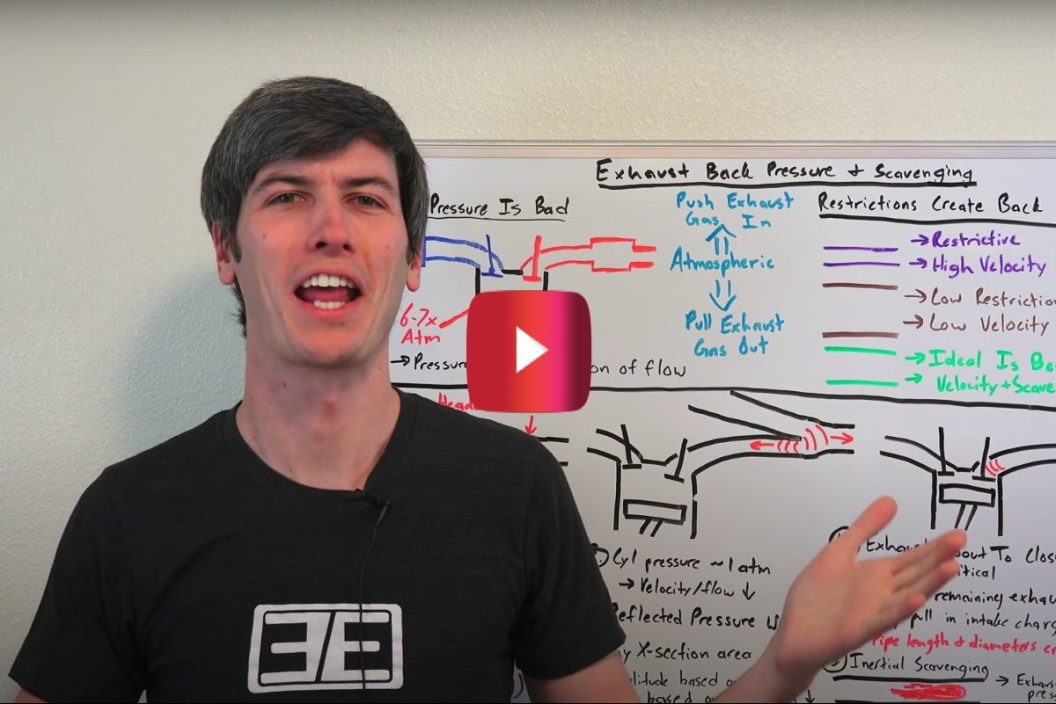Have you ever heard the logic that a car needs back pressure in the exhaust system to run properly? Back in December 2017, the good folks at Engineering Explained posted a video on YouTube that basically says that's all crap.
Mechanical engineer Jason Fenske lays it all out this way: Too many people who think they know what they're talking about are confusing exhaust back pressure with exhaust scavenging. Back pressure will prevent the gasses of combustion from escaping the cylinder when the valve opens. It impedes the exhaust flow, as Fenske points out.
Read More: Check out the Wild Moment That a Muffler Explodes off a Camaro Running Twin Turbos
It's beneficial to allow proper exhaust velocity, which, in turn, will create the exhaust scavenging. As the gasses escape the cylinder as a pressure wave and hits a cross-sectional change in the exhaust pipe, it sends back a pressure wave. When a section of the pipe increases in diameter, the pressure wave that is sent back is a negative wave. That's what you want: A negative pressure wave to arrive at the cylinder head before the outtake valve closes. Fenske describes it this way:
"You want to time it so that just before that exhaust valve closes and your intake valve opens, that negative pressure wave arrives and helps lower the pressure in there, pulling out the remaining exhaust gasses so you have basically an entire empty chamber."
Fenske goes on to say that the negative or low pressure created also helps bring in new air when the intake valve opens. This, he says, is wholly dependent on the length of pipe used for the exhaust. So, now you know.
This post was originally published on December 31, 2017.
